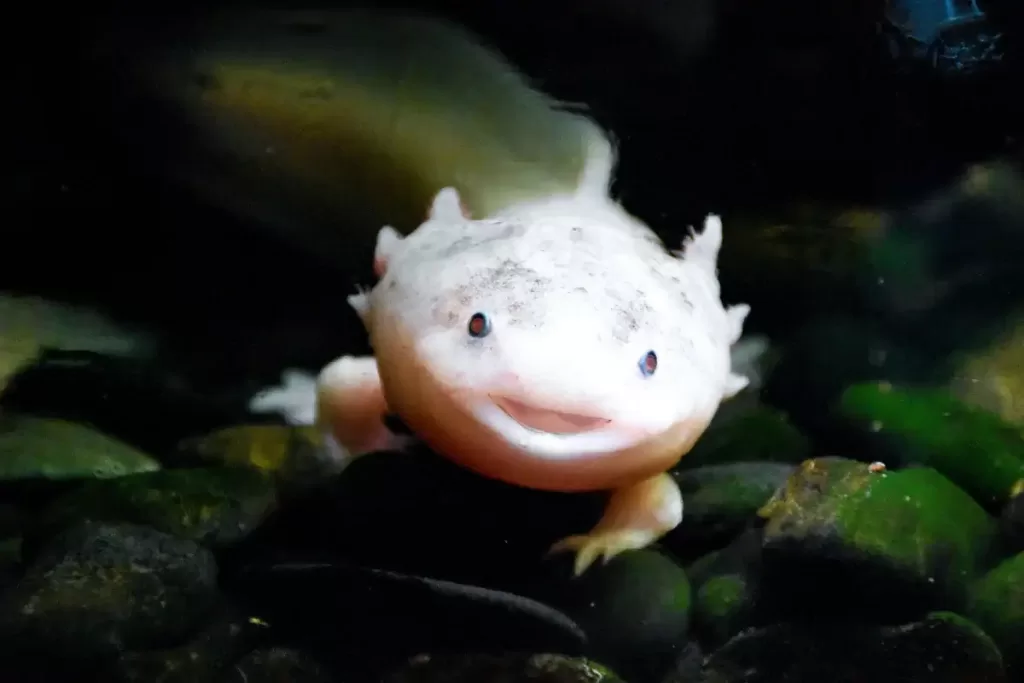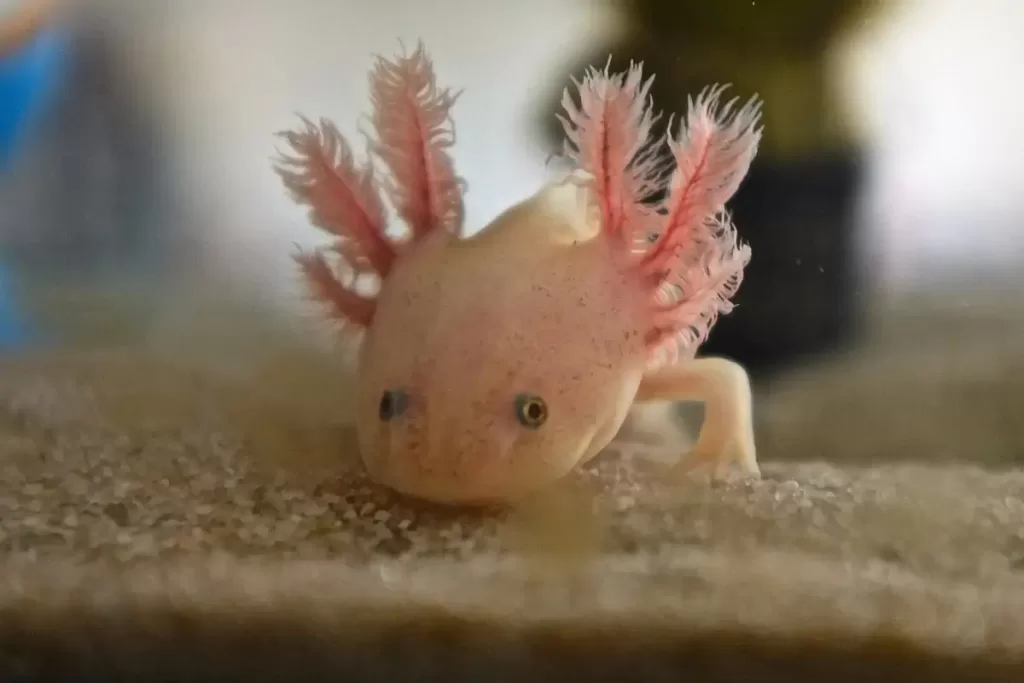The axolotl (scientific name: Ambystoma mexicanum), also known as the walking fish, is a species in the class of amphibians that attracts people’s attention with many features – most notably their “smiling faces”. They are close relatives of the tiger salamander. Here are 10 amazing Axolotl facts:
Axolotl facts
1. The axolotl has an amazing ability to regenerate certain parts of its body and all of its lost limbs
When an axolotl limb is severed, it is fully extended in 1-2 months. It has a better regeneration rate than even the best-of-generation lizards and starfish.
Furthermore, they are living things that can even regenerate brain cells!
2. Their life span
Axolotls have an average lifespan of 15 years in the wild. Captive individuals tend to live longer.
When it reaches adulthood, its length is around 25 cm-30 cm, and half of its length consists of the tail.
Axolotls hibernate when the water temperature drops below 10 degrees.
3. Most of them live in aquariums now
The axolotl is only native to the freshwater lakes of Xochimilco and Chalco (the latter is no longer exists, and Lake Xochimilco remains a remnant of its former self, existing mainly as canals) in southern Mexico.
But, today, almost all over the world, axolotls are fed in aquariums. These creatures, which adapt to aquariums, can live for many years if they are well cared for.

4. Axolotls are carnivores
They feed on the larvae of insects, tiny fish, and worms. Juvenile axolotls feed on plankton and small organisms floating in the water.
With the help of the sense of smell given to axolotls, they can locate their prey and hunt with the help of their long tongue.
5. The breeding season for the axolotl is at the beginning of the calendar year
Axolotls reach sexual maturity in 6 months.
The male leaves the capsule known as the spermatophore, and the capsule goes down to the bottom of the water. The female axolotl settles on it and takes it.
6. Female Axolotls lays a large number of eggs
Female axolotls lay 300 to 1,000 eggs in water.
Eggs are laid on the plants individually and adhere to the leaves. Axolotls hatch after 2-3 weeks, depending on the water temperature.
The larva begins to eat any small organism it can get into its stomach. Most axolotl offspring are cannibals, so when they are in the same places, rivalries and attacks abound. As they grow to reach about 15 cm, they become less aggressive and more docile.
7. Those hairy branches extending from both sides of the axolotl’s head – what do you think they are?
Three pairs of feathery gills on the sides of its head allow it to take oxygen from the water. With this feature, it differs from a typical salamander.
They usually come to the surface sometimes to get some air.

8. It is considered a representation of the Aztec gods
The word axolotl comes from a combination of the words ātl (“water”) and xōlōtl (“slippery, crumpled, slave”) in the classical version of Nahuatl, the Aztec language that lived in the Valley of Mexico in the 16th century.
9. Despite being critically endangered, Axolot actually has few predators
There are a few aquatic creatures that prey on the walking fish axolotl. These are Tilapia and Carp.
10. Their eyes are lidless
As a result, they have poor eyesight, and they are sensitive to light. They prefer dim lights.
Some not so-amazing Axolotl facts
Their habitat is very limited and has been listed as critically endangered by CITES (The Convention on International Trade in Endangered Species of Wild Fauna and Flora) and IUCN (The International Union for Conservation of Nature).
There are only 50 to 1000 adult individuals still living in the wild.
Their critically endangered status is due to habitat loss.
For example, they are only native to the freshwater of Lake Xochimilco and Lake Chalco in Mexico. Lake Chalco is no longer exists, and Lake Xochimilco remains a remnant of its former self, today existing mainly as only canals.
Sources
- Axolotl on Wikipedia
- “Axolotls” on the Department of Education of the Government of Western Australia website
- Sloth Facts: 10 Amazing things about these adorable mammals - August 12, 2022
- 10 Amazing Koala Facts - February 18, 2022
- 10 Amazing Humpback Whale Facts - December 22, 2021
